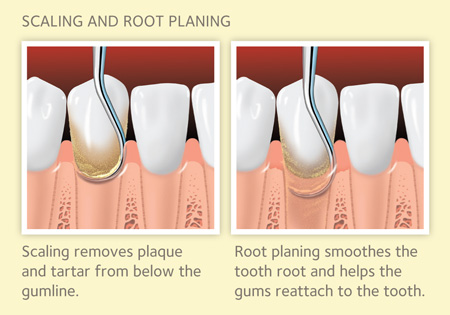Scaling & Root Planing

Gingivitis is a generative gum disease that can cause significant tooth and gum deterioration if left untreated. However, treatment is simple and performed right in your dentist’s office.
Plaque and tarter that accumulate on the teeth provide an environment for bacteria to thrive and multiply. The bacteria can cause the gums to become inflamed and bleed. Inflammation often becomes more noticeable when when brushing or eating. These are signs of the early stages of gingivitis. Gingivitis can be easily treated by scaling and polishing the teeth. However, left untreated, gingivitis can progress further and the roots will need a planing. The difference between scaling and root planing is simple: scaling is the removal of the dental tartar from the tooth surface while root planing is the process of going deeper to smoothen the root surfaces and remove the infected tooth structure.
Scaling and root planing is a non-surgical procedure that can be done right at the dentist’s office. Advanced stages of gingivitis may require local anesthetics to numb the area for complete comfort. Deep scaling and root planing is usually divided into 1-2 quadrants of the mouth per appointment. Doing so allows for adequate healing time and reduces the time for each appointment.
#Houston #Dentist #Dental # Houston Dentist #Memorial #April2020